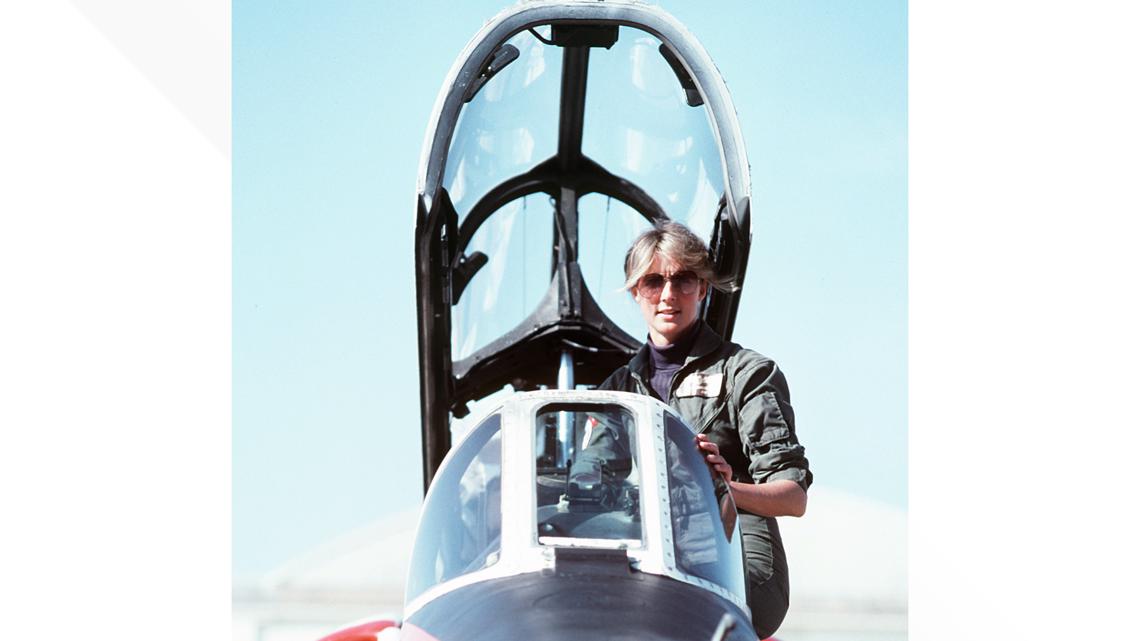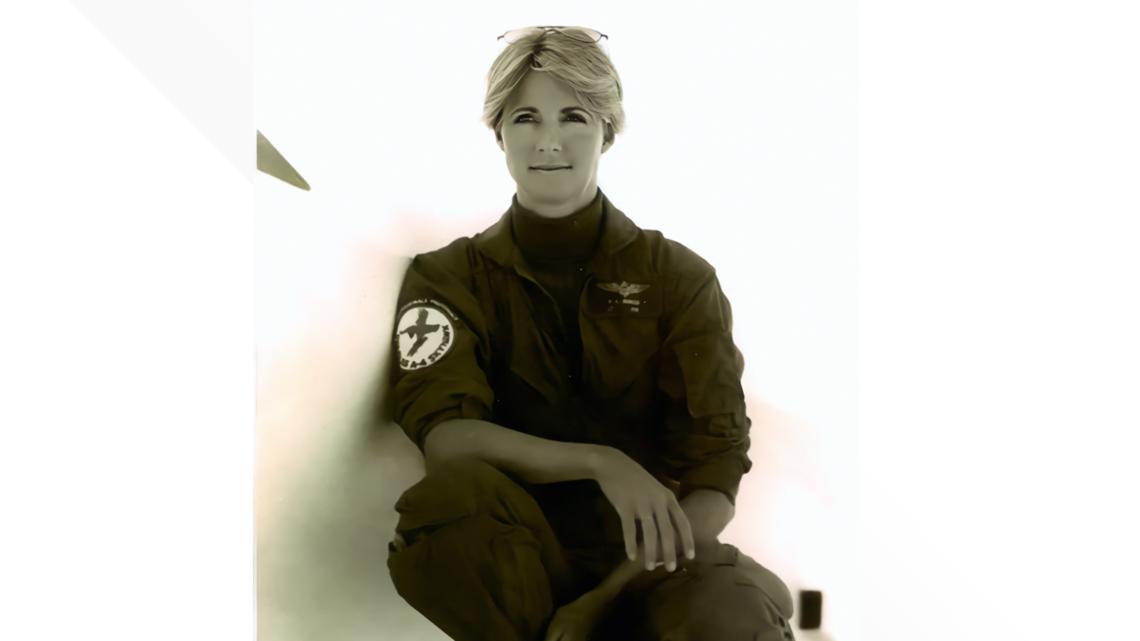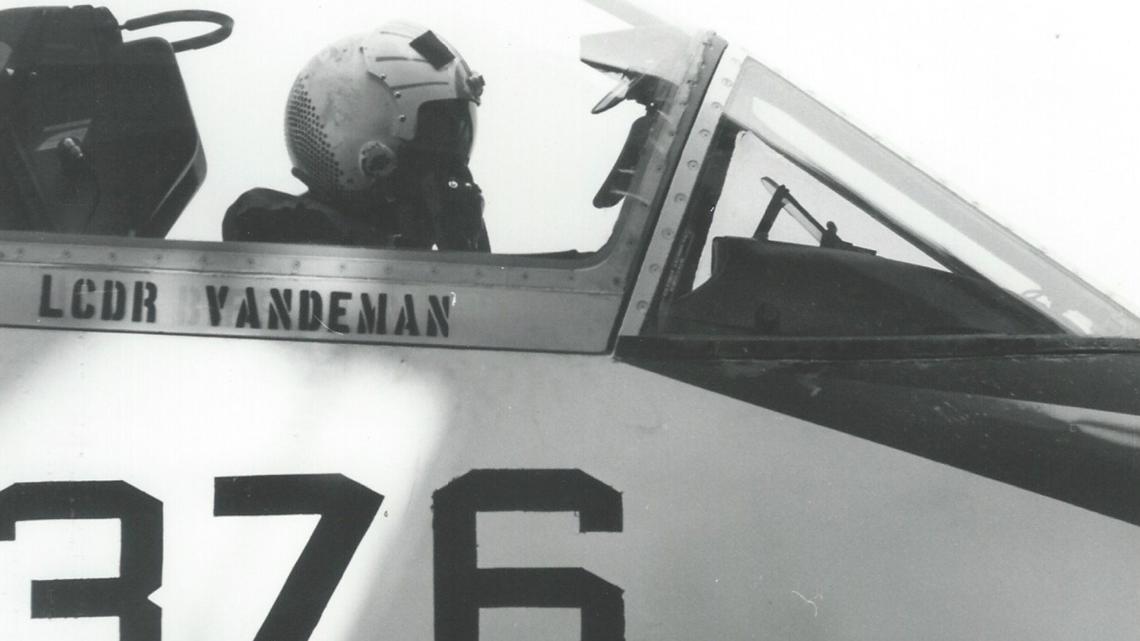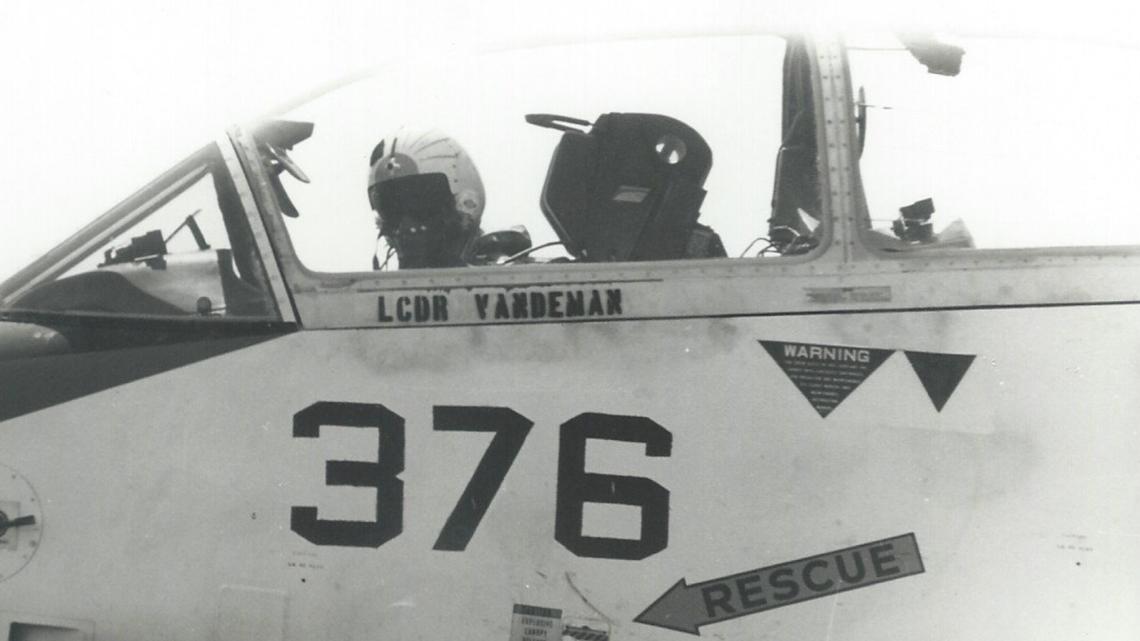‘I knew as long as I did the work and have the discipline and whatever skill level required, that they were behind me,’ Patricia Denkler said.
CORPUS CHRISTI, Texas —
Patricia Denkler landed a TA-4J Skyhawk on the deck of the USS Lexington on Sept. 25, 1981.
History was made on the flight deck that day when she became the first female U.S. Navy aviator to carrier-qualify in a jet.
Now, that history is seen by everyone who takes the lower decks tour aboard the USS Lexington Museum, docked in Corpus Christi Bay. It’s part of the museum’s new “Women of the Navy” exhibit.
“I most definitely have to give credit to the women that went before me,” Denkler said. “There were others that were more than capable, etc., but the rules were still in place where women could not get their wings in jet aircraft.”
A rule Denkler helped change after meeting with the Chief of Naval Air Training, Admiral Edward H. Martin, following her carrier qualification. She said the next year, following the meeting, women had the option to earn their “Wings of Gold” in jets. That path didn’t exist for Denkler and the woman before her.
“It was more than a big deal, it was a tremendous turning point,” Denkler said. “It took leadership, courage, and going against the grain for Admiral Martin to do that.”
Student pilots in the Navy start out with basic flight training. After finishing the primary training, they’re able to select the next type of aircraft they want to learn to fly. At the time, women could only receive their wings to fly helicopters or propeller airplanes. Denkler had to request a transition, or apply for jets, at a later time.
“It was a very bastardized program, quite honestly,” Denkler said.
The jet-transition pipeline meant Denkler had a shorter amount of time to learn how to fly a jet. She skipped training on the T-2 Buckeye.
At the time, she was instructing in the T-34 Charlie prop airplane. Denkler said it was a big leap to go straight to the TA-4 jet.
“I just stayed in the zone during that training and never socialized or anything,” Denkler said. “I was just really over-the-top focused.”


Despite the short syllabus, Denkler said the instructors were phenomenal and credits those at VT-4 Advance Flight School in Pensacola for her success.
“They were so supportive of me, which is really a big encouragement because sometimes that always wasn’t the case,” Denkler said. “I knew as long as I did the work and had the discipline and whatever skill level required, that they were behind me.”
When it was time to head out to the USS Lexington, she said she already knew her training had given her the capability to land on the carrier.
“The only thing you have to concern yourself with is whether or not you get psyched out or not, and if you stay in that little zone, you know, it doesn’t allow it to creep in,” Denkler said.


When the time came to take off and land on the aircraft carrier, Denkler said it was a rush.
“I don’t know if the bigger rush is the trap or the catapult shot,” she said. “The LSOs (landing signal officers) knew I was as comfortable as I could be landing. What I had the most curiosity about, or I just couldn’t wrap my head around was the catapult shot.”
She said with the carrier’s added height, all she could see was water, making it hard for her eyes to keep up with the plane’s acceleration.
“That to me was cooler than grits,” Denkler said. “It was just great.”


It’s a moment now documented in the new “Women of the Navy” exhibit.
“This, right here, is Patricia Denkler. This is her. This is her the day when she landed the TA-4J,” Steve Banta said while pointing to the official U.S. Navy photograph taken the day Denkler qualified to land on aircraft carriers.
Banta is the Executive Director of the USS Lexington Museum.
“We always thought, we need to tell the story about women of the Navy, and the reason is because the USS Lexington is the first aircraft carrier in the Navy that had women serving aboard as part of the crew,” Banta said.
Visitors could already see the rooms where the women slept on the lower decks tour, but now that history has been expanded.
“The more research we did, we realized just how great the story is and you really need to tell the whole story,” Banta said. “So we went back all the way to the beginning — 1908 — when the Nurse Corps was founded in the U.S. Navy. Women were officially part of the Navy.”


Interactive exhibits, including touch screens, video displays, timed animations, and an F-18 jet simulator, show the jobs women have held in the Navy. The display starts with the nurse corps and ends with all the options available today, including flying jets.
“How brilliant to do interactive exhibits for the young people,” Denkler said. “It’s an inspiration for the future more than it is a recognition of the past. The past inspires the future.”
The “Women of the Navy” exhibit is currently in a soft-opening phase, which means there may be times parts are closed while the Lexington staff prepares for the ribbon-cutting ceremony sometime this summer.


